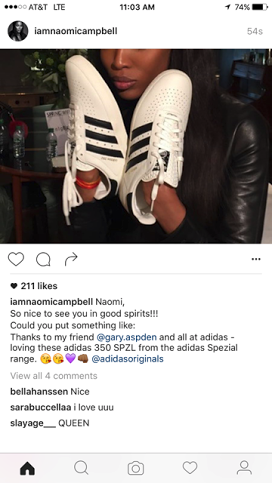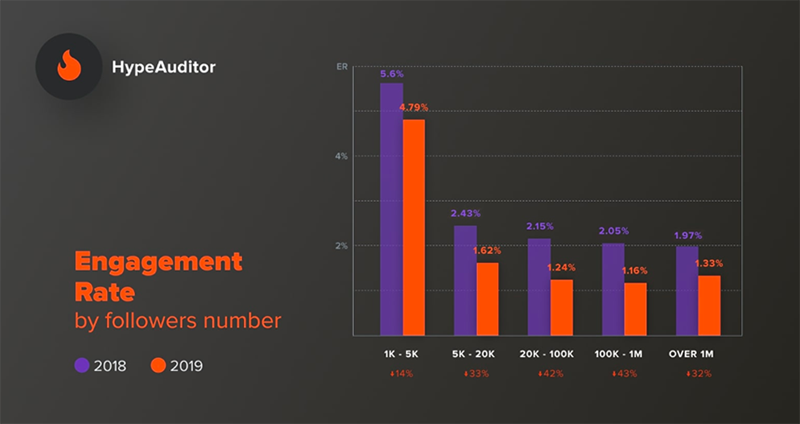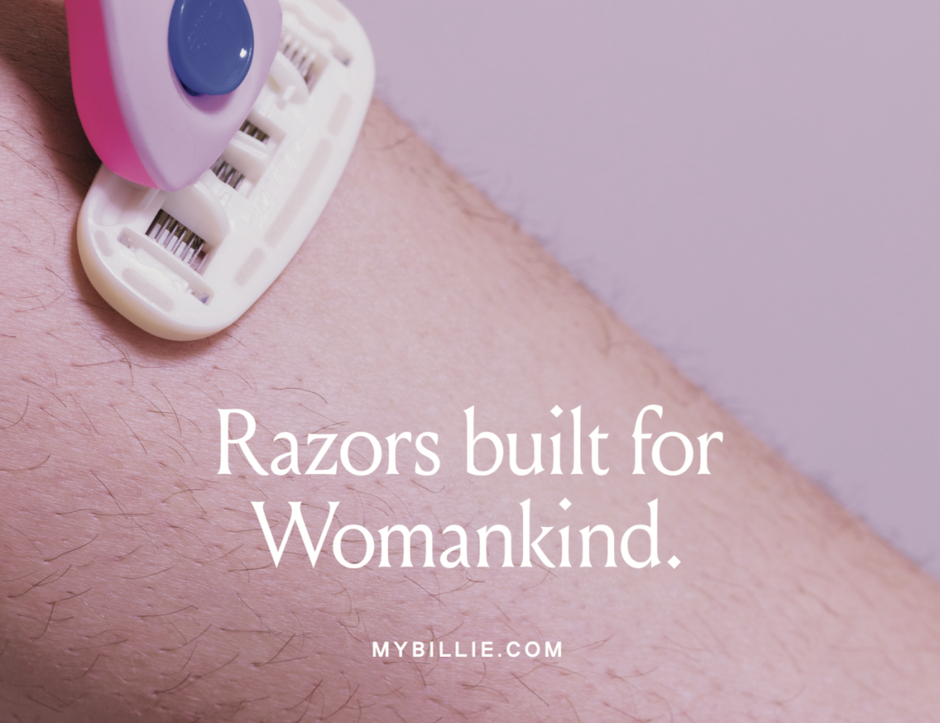


Keep it real: how brands can win on social media

In 2020 we unveiled our Future of Beauty report. In particular, we took a look at Gen Z’s purchasing habits and how their behaviours are changing the industry (if you haven’t got your copy yet, that’s fine. We’ll wait.)
A common theme revealed throughout our research was Gen Z’s desire for greater authenticity; be that in the content they digest, the brands they engage with or even the way they present themselves.
In fact, 71% of Gen Zers told us they would prefer to “always feel good” rather than “always look good”. And the generation that would most like to “always look good”? You guessed it. That would be my very own selfie-taking, crushed-avo-on-toast brunching, binge-watching Millennials. And that’s a key point for brands to understand.
As of last year, Generation Z became the most populous generation on the planet. Their spending power is estimated at around £7billion, and as more enter the workplace, that is only going to get bigger. Yet for years now marketers have been focused on Millennials. Billions have been spent in advertising dollars to reach them. Adjusting strategies to reach this radically different generation is going to be a challenge that comes to define many brands. And authenticity will be at the heart of this. So, what can your brand do about it?
Well, this isn’t going to be another blog about purpose, how you can’t fake it, yadda, yadda yadda. I’ll let someone far more qualified than me do that. I’m going to take a look at how this apparent desire for ‘real’ and authentic output from brands is changing the world of content and digital marketing.
Influencers – the smaller the better
While the global Covid-19 pandemic had big repercussions for the influencer industry, consumers’ need for authenticity was already causing something of a shift here.
As part of our Future of Beauty research, we decided to take a look at the changing role of influencers and consumer attitudes towards them. Firstly, some good news for influencers – 33% of Gen Z and 19% of Millennials told us they were likely to be swayed by influencers when considering a beauty product.
However, authenticity begins to rear its head - 26% of Gen Z and 31% of Millennials also told us they’d be persuaded by a recommendation from a friend, compared to a celebrity recommendation, which was just 14% and 11% respectively. And these numbers are actually very telling. People no longer want celebrity recommendations and endorsements. We don’t believe them. We’re (metaphorically and literally) not buying what they’re selling anymore. We can see through these attempts by brands to associate themselves with celebrities, and because we don’t believe the celebrity truly believes/uses/needs the product they’re shilling, we’re less inclined to believe them than we once were. Yes, even you Naomi.

So, where does this tie in to influencers? Well these days your Zoellas and Deliciously Ellas are huge. Follower numbers in the millions. It could easily be argued that they’re celebrities in their own right. But for the purpose of this section they’re influencers, ok? And as these follower numbers have grown and grown, their overall effectiveness as a marketing tool on social media has waned somewhat.
As the chart below, from influencer analytics tool HypeAuditor, shows, micro influencers – those with a following of less than 100 see an average engagement rate of 2.55%. This engagement rate drops by more than 50% when we get to macro influencers (100k – 1M followers) and by 48% for mega influencers (1M+). And as we always preach to our clients, engagement rates are king when it comes to social.

As we outlined above, the reason for this is authenticity. People will engage with content that feels more real, less like a paid advert. Macro influencers strike the right balance here, with enough followers to lend weight to their tastes, style choices etc., but few enough to still appear grounded, real, relatable. When it comes to purchasing habits and product recommendations, Gen Z are happy to blur the lines between influencers and friends, but only when the influencer is flawed and authentic.
So, if your brand is planning any influencer activity in the near future, consider the size of influencer you want to work with, especially if you’re trying to connect with Gen Z.
End of the Instagram aesthetic?
Let’s have a little quiz. Earlier, what % of Gen Z did I say had told us they’d prefer to feel good rather than look good?
The answer? 71%. That’s more than two thirds. And we’re seeing this attitude reflected in the way they interact on social media channels.
Some time around the end of 2018, people started to notice this change, and suddenly websites, Medium and LinkedIn feeds were full of articles proclaiming the death of the Instagram aesthetic. Well, with over 1 billion active users right now, that’s one slow, drawn-out death. But there has been a genuine shift in the content people share on the platform. Marketers, brand managers and all those thousands of people on the platform just to stalk their exes will have encountered this change, and it’s super important that brands and businesses which want to exist on social media adjust.
So, what are the changes? Well, the biggest change has been the rise in the use of stories on Instagram. In just over three years, the number of people on Instagram using stories has grown by more than 300%, with more than 500 million people using them as of December 2019. These are massive numbers, and with as many as 25% of people swiping up to view content from stories, it’s not a channel to ignore.
But why so successful? The answer ties back in to the theme of this blog (you see, I’m not just making this up as I go along). Stories are raw. Real. Authentic. Genuine. True. You get the idea. They’re a bit like the status updates we used to do on Facebook. Unlike the Instagram grid, stories are not super-slick, polished projections of how we want the world to view us. They’re a real snapshot into what we’re doing in our lives, where we are and who we’re with.
I mention the Instagram grid, but even that is changing too. For Gen Z, it isn’t all about that perfect picture of your bottomless-brunch, captured with just the right light and enough of the menu to suggest you don’t care if people know where you are, but actually you really do. No. For Gen Z it’s all about actually enjoying the moment. So we’re seeing their Instagram grids – and also the content they want to engage with – start to mirror stories. Unpolished. Raw. Genuine. Sure, they’ll still share the brunch snap, but it’s about speaking of sharing a moment with friends, hours wont be wasted trying to capture the perfect angle and edit with the ideal filter. *Snap*. Post. Done. And while they’re at it, to hell with using a billion hashtags. This is why engagement rates on Instagram posts have been steadily declining – albeit still very strong – and links back to what we said earlier regarding influencers.
This isn’t just an Instagram thing either. We’ve seen it with websites, like the Marvel and Adidas examples below, throwing it back to a time when the internet was a much less slick, never-ending see of cookie-cutter websites. There is personality and individuality coming through. In fact, as I look at those I’m reminded of taking a book out of the library waaaaay back in 2002. It was a hefty book, all about how to use HTML and code. I did not finish it. But the little bits I did use stood me in good stead when it came to one of the original social media channels – MySpace. Users who knew some basic HTML could imbue their profiles with their own personality. They were raw, messy. Cluttered (not to mention embarrassing). But again, they were a reflection of people’s authentic selves.

So what can marketers do about it? Obviously I’m not saying you should immediately tear up any brand guidelines or overhaul your entire look and feel. But there is certainly room for balance. Take stories as an example. These are actually a great tool for taking people behind the curtain of your brand. Whether it is going behind the scenes on a new photoshoot, taking delivery of some new packaging or introducing team members, there are dozens of ways stories can be used to keep your brand grounded and real. And people expect this. Stories should be raw. Shoot them on a smartphone. Use the cheesey stickers and gifs available. Have some fun.
The Instagram grid might be harder for brands, but why not focus on the captions here? Think about everything Gen Z care about – mental wellbeing, social consciousness. The caption shouldn’t be worthy, but if it is right for your brand to talk about some of these topics, don’t shy away. Though equally, don’t force or fake it.
Keeping it ‘real’
That leads nicely onto my final point. Gen Z want brands to keep it ‘real’. So, how do you do that, and which brands are doing it well?
Actually, one of the interesting things about the Covid-19 situation has been seeing how brands have shifted their tone and the way they do things. I mean everything. All of a sudden, supermarkets have changed their opening hours to fit the needs and demands of the country. Delivery companies have changed how they operate. What this flexibility has show is that big corporations can adapt, they can listen, they can change if they have to. Rather than things “not being policy”, “computer says no”, they’ve shown a human side.
We see it on TV now. Interviews conducted on grainy webcams, makeshift studios in people’s homes, adverts for everyone from Vodafone to Shelter have a raw, rough and ready, DIY aesthetic to them now. And it’s great. It all seems more authentic and more genuine.In fact, in a recent blog, we looked at how ‘authenticity’ drives the purchasing habits of Gen Z, and the health and beauty brands that were already successfully doing this.

Gen Z told us they prefer to feel good. They place a value on authenticity above all else. They want brands to be upfront and honest, wherever they interact with them. From the ingredients in their product, to the content on their Instagram stories.
I said earlier that Gen Z want influencers to play the role of friend, flaws and all. For brands to win with Gen Z, it’s going to need a similar approach – play the role of friend, authentically!
Posted 21 April 2020 by Ben Waterhouse
Posted 21 April 2020 by Ben Waterhouse